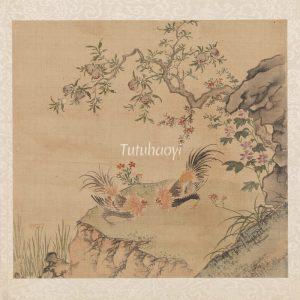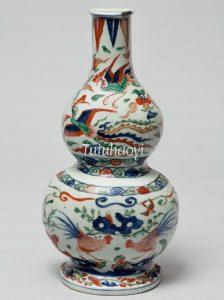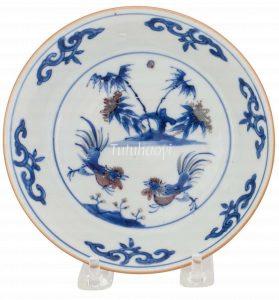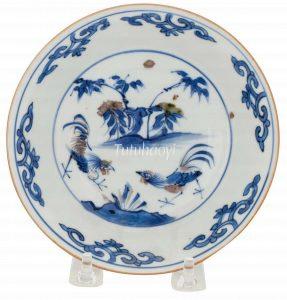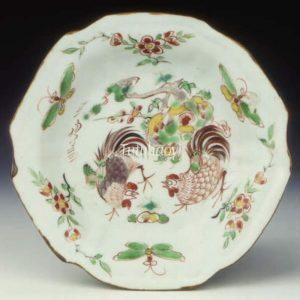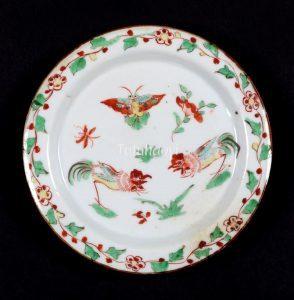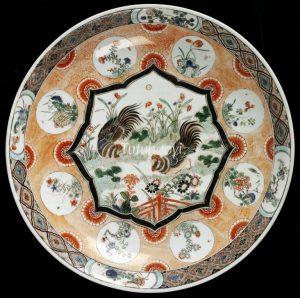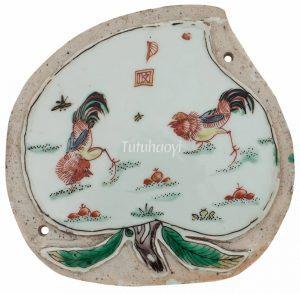Two heroes fighting with their intelligence
双雄斗智
© Tutuhaoyi.com owns the copyright of the description content for the images attached. Quoting all or part of the description content on this page is permitted ONLY IF ‘Tutuhaoyi.com’ is clearly acknowledged anywhere your quote is produced unless stated otherwise. (本页描述内容版权归Tutuhaoyi.com所有,转发或引用需注明 “Tutuhaoyi.com”, 侵权必究, 已注开源信息的条目除外。)
‘Shuang 双’ is the Chinese word for ‘two’. ‘Xiong 雄’ in ‘Xiong ji 雄鸡’ in the Chinese name for ‘rooster’ makes a pun on ‘xiong 雄’ for ‘hero’. Thus, the image of two roosters in confrontation is meant to represent two competent officials competing with their intelligence for eminent government posts.
Related Pun Pictures:
Fig 1: 榴实双鸡, album leaf, ink and colour on silk, Ming dynasty, Zhou Zhimian (周之冕, 1521–?), courtesy of the National Palace Museum, Taipei, Accession No. 001146N000000003
Fig 2: porcelain wall vase with overglaze enamelled decoration, Wanli period (1573–1620), Ming dynasty, courtesy of the Museum of East Asian Art (Cologne)
Fig 3-4: porcelain dish with underglaze blue and red decoration, Tianqi period (1621–27), Ming dynasty, courtesy of the Jie Rui Tang Collection
Fig 5: porcelain saucer with overglaze enamelled decoration, Tianqi period (1621–27), Ming dynasty, courtesy of the Museum of East Asian Art, Bath, UK
Fig 6: porcelain dish with overglaze enamelled decoration, Chongzhen period (1628–44), Ming dynasty, courtesy of Ashmolean Museum, University of Oxford, Accession no. EA1978.1050
Fig 7: porcelain dish with overglaze enamelled decoration, Kangxi period (1662–1722), Qing dynasty, courtesy of Victoria & Albert Museum, London
Fig 8: famille verte biscuit peach-form plaque, Kangxi period (1662–1722), Qing dynasty, courtesy of the Jie Rui Tang Collection, Catalogue Number 1635
